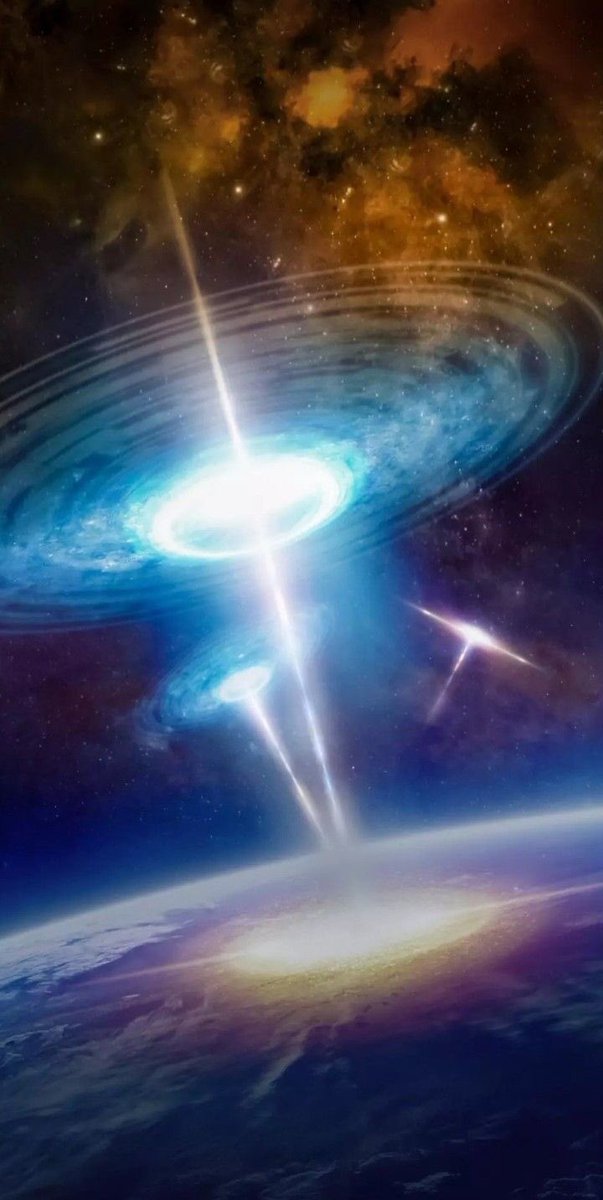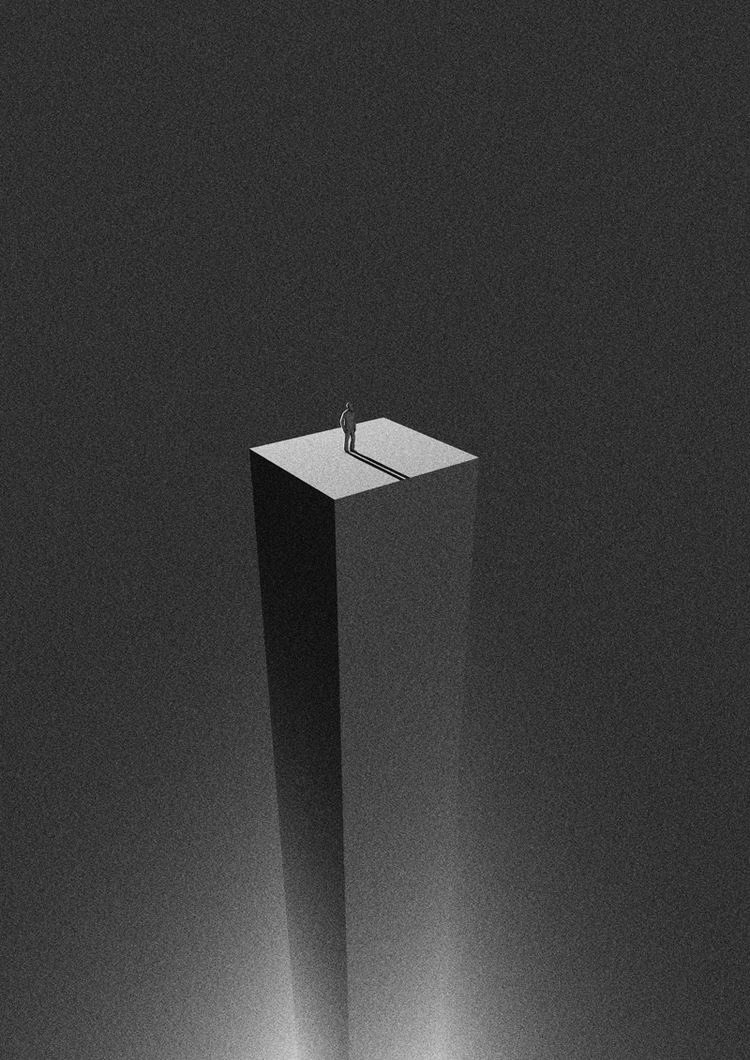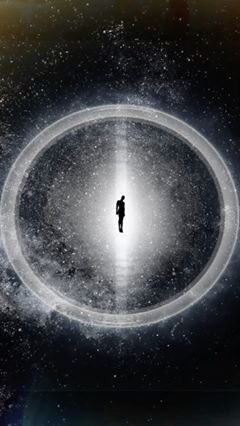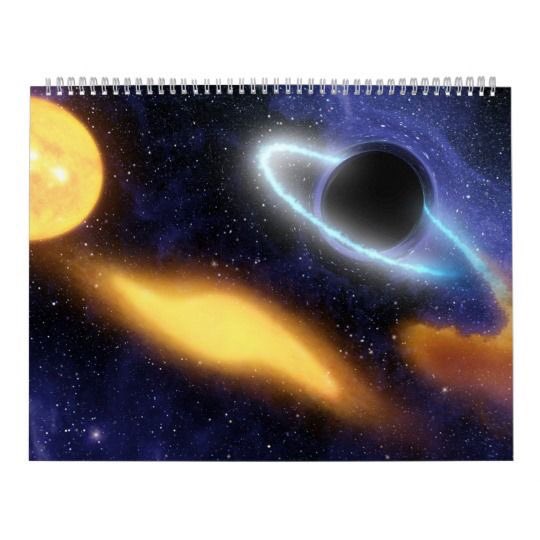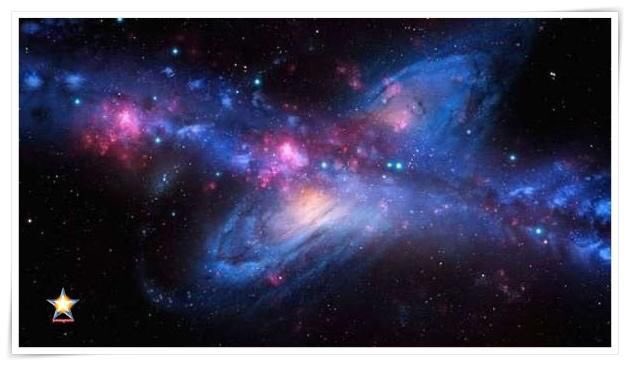#Thread on Hinduism, Time and Science.
“Time is an illusion and it is a relative concept”, said by Albert Einstein (later it was practically proved), in 1905. SAME thing was written in HINDU’s scriptures more than 5000 years ago, way before the Einstein.
“Time is an illusion and it is a relative concept”, said by Albert Einstein (later it was practically proved), in 1905. SAME thing was written in HINDU’s scriptures more than 5000 years ago, way before the Einstein.
Bhagavad Geeta 11.32
श्री भगवानुवाच
कालोऽस्मि लोकक्षयकृत्प्रवृद्धो
लोकान्समाहर्तुमिह प्रवृत्तः।
ऋतेऽपि त्वां न भविष्यन्ति सर्वे
येऽवस्थिताः प्रत्यनीकेषु योधाः।।
In Hinduism time is known as kala. Kala means both time and death. Time is personified as the god of death, Yama.
श्री भगवानुवाच
कालोऽस्मि लोकक्षयकृत्प्रवृद्धो
लोकान्समाहर्तुमिह प्रवृत्तः।
ऋतेऽपि त्वां न भविष्यन्ति सर्वे
येऽवस्थिताः प्रत्यनीकेषु योधाः।।
In Hinduism time is known as kala. Kala means both time and death. Time is personified as the god of death, Yama.
Kala as god of death determines how long a person should live upon earth. So death and time are associated together. An individual& #39;s time upon earth begins with his birth and ends with his death.
According to hinduism, time is endless but we can associate its origin as
According to hinduism, time is endless but we can associate its origin as
one of 36 tattvas or principles of creation recognized in Saivism. It exists as long as we are bound to the physical world. It is a creative play of MAYA (material world), a fundamental concept of hinduism.
The Hindu calculation of time comes to us from sage Ganita who is
The Hindu calculation of time comes to us from sage Ganita who is
mentioned in the Manusmriti and the Mahabharata. He calculated the duration of each cycle of creation in human years. He divided the cosmic time into Kalpas, which is a day and night in the time and space of Brahma. It is considered to be equal to 8.64 billion yrs (Vishnu Purana)
Each Kalpa is further divided into 1000 maha yugas. Each maha yuga is again divided into four yugas, namely krita yuga, treat yuga, dvapara yuga and kali yuga. Their duration varies. Krita/sat yuga the first in the series has the longest duration of 1.728 million years and
kali yuga, which is the last and the current, has a duration of only 432000 years.
The lifespan of Brahma is considered 100 Brahma years, which is known as Maha Kalpa or Parardha. It is equal to 311.04 trillion human years.
A day in the life of gods is equal to one year
The lifespan of Brahma is considered 100 Brahma years, which is known as Maha Kalpa or Parardha. It is equal to 311.04 trillion human years.
A day in the life of gods is equal to one year
upon earth. It is divided into day and night. The day is known as uttarayana and the night as dakshinayana. They are equal to 180 days each.
In Hindu tradition there is another division of time called manvantara. A manavantara is the period during which the earth is ruled by a
In Hindu tradition there is another division of time called manvantara. A manavantara is the period during which the earth is ruled by a
particular Manu, the father of man. The word & #39;man& #39; comes from the Sanskrit word Manu. According to tradition, a new Manu manifests at the beginning of each manvantara to produce a new race of human beings. Each manvantara lasts for about 71 mahayugas or approximately
308 million years. In each manvantara along with Manu appear seven seers or rishis and one Indra. In all 14 Manus appear in each Kalpa over a period of 1000 mahayugas in succession. The current Manu is 7th in the line and is known as Vaivasvata Manu.
Now, before going further you need to understand that like western, we don’t consider time as a linear concept, we consider it as cyclic concept as mentioned in Rig veda 10.190.3-
सूरय्याचन्द्रमसौ धाता यथा पूर्वमकल्पयत् I
दिवं च पृथ्वीं च अंतरिक्षमथो स्वः II
सूरय्याचन्द्रमसौ धाता यथा पूर्वमकल्पयत् I
दिवं च पृथ्वीं च अंतरिक्षमथो स्वः II
concept, we consider it as cyclic concept as mentioned in Rig veda 10.190.3-
सूरय्याचन्द्रमसौ धाता यथा पूर्वमकल्पयत् I
दिवं च पृथ्वीं च अंतरिक्षमथो स्वः II
"The Ordainer created the sun and moon like those of previous cycles. He formed in order universe and Earth,
सूरय्याचन्द्रमसौ धाता यथा पूर्वमकल्पयत् I
दिवं च पृथ्वीं च अंतरिक्षमथो स्वः II
"The Ordainer created the sun and moon like those of previous cycles. He formed in order universe and Earth,
the regions of the air, and light."
Moving forward, Each time-cycle has three components, srishti, sthithi and laya. Srishthi means creation. Sthithi means continuation and laya means dissolution. Each time cycle begins with creation, continues for certain duration of time and
Moving forward, Each time-cycle has three components, srishti, sthithi and laya. Srishthi means creation. Sthithi means continuation and laya means dissolution. Each time cycle begins with creation, continues for certain duration of time and
then dissolves into nothingness. After a brief respite, the cycle begins all over again. These three aspects of time are under the control of the Trinity, Brahma, Vishnu and Siva. Hence, It is Time that kick starts the creation of the material world and it is Time that destroys
the material world.
Same concept is being preached by science of this era as a concept of big bang and big crunch.
Other concept that are mentioned in our scriptures-
1. Space time-
पूर्ण कुम्भोदिः काल आहितस्तं वै पश्यामो बहुदा नु सन्तः । [AtharvaVeda 19.53.3]
Same concept is being preached by science of this era as a concept of big bang and big crunch.
Other concept that are mentioned in our scriptures-
1. Space time-
पूर्ण कुम्भोदिः काल आहितस्तं वै पश्यामो बहुदा नु सन्तः । [AtharvaVeda 19.53.3]
A full pot has been placed in Time and it is that which we see manifoldly.
Also, in the Dakshinamurty stotram composed by Adi Shankara he states:
बीजस्याऽन्तरिवाङ्कुरो जगदिदं प्राङ्गनिर्विकल्पं पुनः
मायाकल्पितदेशकालकलना वैचित्र्यचित्रीकृतम् ।
Also, in the Dakshinamurty stotram composed by Adi Shankara he states:
बीजस्याऽन्तरिवाङ्कुरो जगदिदं प्राङ्गनिर्विकल्पं पुनः
मायाकल्पितदेशकालकलना वैचित्र्यचित्रीकृतम् ।
This World is Like a Sprout of a Seed Within which transforms what is Changeless state Before, appear Again as Space and Time, and endless Varieties of Pictures over it; all due to the Creation of Maya.
2. Time relativity and twin paradox- The most famous is the story of
2. Time relativity and twin paradox- The most famous is the story of
Kakudami and his daughter revati. They sit in BrahmaLoka for only about 20 minutes and millions if years passes in the Earth. Relevant verses from Srimad Bhagvatam is 9.3
Hinduism took the the time unit to a next level-
1 paramanu= 60,750th of a sec
1 truţi = 29.6296 microsec
Hinduism took the the time unit to a next level-
1 paramanu= 60,750th of a sec
1 truţi = 29.6296 microsec
1 nimesha= 88.889 milliseconds (blink of a eye- lid
* 18 nimesha= 1 kaashthaa
* 30 kaashthaa=1 Kalaa
* 30 Kalaa= 1 Kshana
* 12 Kshana= 1 Muhurata
* 30 Muhurata= 1 Ahoratra (single day+single night of human)
* 15 Ahoratra = One paksha (fortnight, Krishna paksha or shukla paksha)
* 18 nimesha= 1 kaashthaa
* 30 kaashthaa=1 Kalaa
* 30 Kalaa= 1 Kshana
* 12 Kshana= 1 Muhurata
* 30 Muhurata= 1 Ahoratra (single day+single night of human)
* 15 Ahoratra = One paksha (fortnight, Krishna paksha or shukla paksha)
* 2 Paksha= 1 Month (this period is equal to single day+single night of men, the Krishna paksha being their day and the shukla paksha being their night)
* 12 Months = 1 Year (this period is equal to single day+single night of Devas.)
* Then there are six seasons in one year,
* 12 Months = 1 Year (this period is equal to single day+single night of Devas.)
* Then there are six seasons in one year,
such that each season lasts for two months.
* 1 Satya Yuga : 17,28,000 years of a man
* 1 Treta Yuga : 12,96,000 years of man
* 1 Dvapara Yuga : 8,64,000 years of man
* 1 Kali Yuga : 4,32,000 years of man
* 1 MahaYuga= 1 cycle of above four Yugas= 43,20,000 years
* 1 Satya Yuga : 17,28,000 years of a man
* 1 Treta Yuga : 12,96,000 years of man
* 1 Dvapara Yuga : 8,64,000 years of man
* 1 Kali Yuga : 4,32,000 years of man
* 1 MahaYuga= 1 cycle of above four Yugas= 43,20,000 years
* 12,000 Deva year = 1 Mahayuga (which is one yuga of Devas. For Devas, there is no distinction of Satya, Treta, etc in yugas)
* 71 Mahayugas = 1 Manvantara (Each manvantara has its own Manu as the ruler)
* 1000 Mahayugas= 1 Kalpa
* 2000 Mahayugas= one single day+one single night
* 71 Mahayugas = 1 Manvantara (Each manvantara has its own Manu as the ruler)
* 1000 Mahayugas= 1 Kalpa
* 2000 Mahayugas= one single day+one single night
1 of Brahma
* 100 years of Brahma= one single day+one single night of Ishvara (=31,10,40,00,00,00,000 Human years.)
After this Pralaya happens.
This destruction is of four types:
1. Nitya Pralaya is the sleep or by an extension thereof, Death.
2. Naimittika Pralaya is the end of
* 100 years of Brahma= one single day+one single night of Ishvara (=31,10,40,00,00,00,000 Human years.)
After this Pralaya happens.
This destruction is of four types:
1. Nitya Pralaya is the sleep or by an extension thereof, Death.
2. Naimittika Pralaya is the end of
a single day of Brahma, when the three worlds (Bhuh:, Bhuvaha: and Suvaha:) disintegrate.
3. Maha Pralaya is the great deluge at the end of the age of one Brahma ,which consists of 100 Brahmic Years (365 Times 2,000 ChaturYugas).
4. Aatyantika Pralaya is "the final deliverance
3. Maha Pralaya is the great deluge at the end of the age of one Brahma ,which consists of 100 Brahmic Years (365 Times 2,000 ChaturYugas).
4. Aatyantika Pralaya is "the final deliverance

 Read on Twitter
Read on Twitter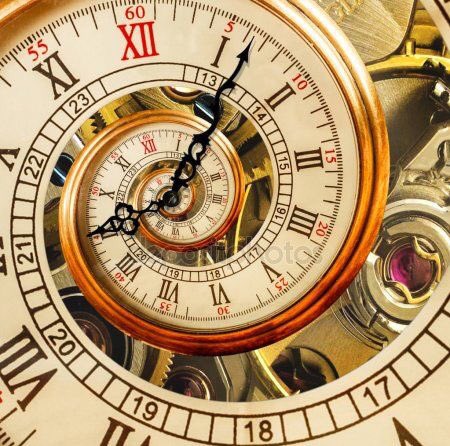
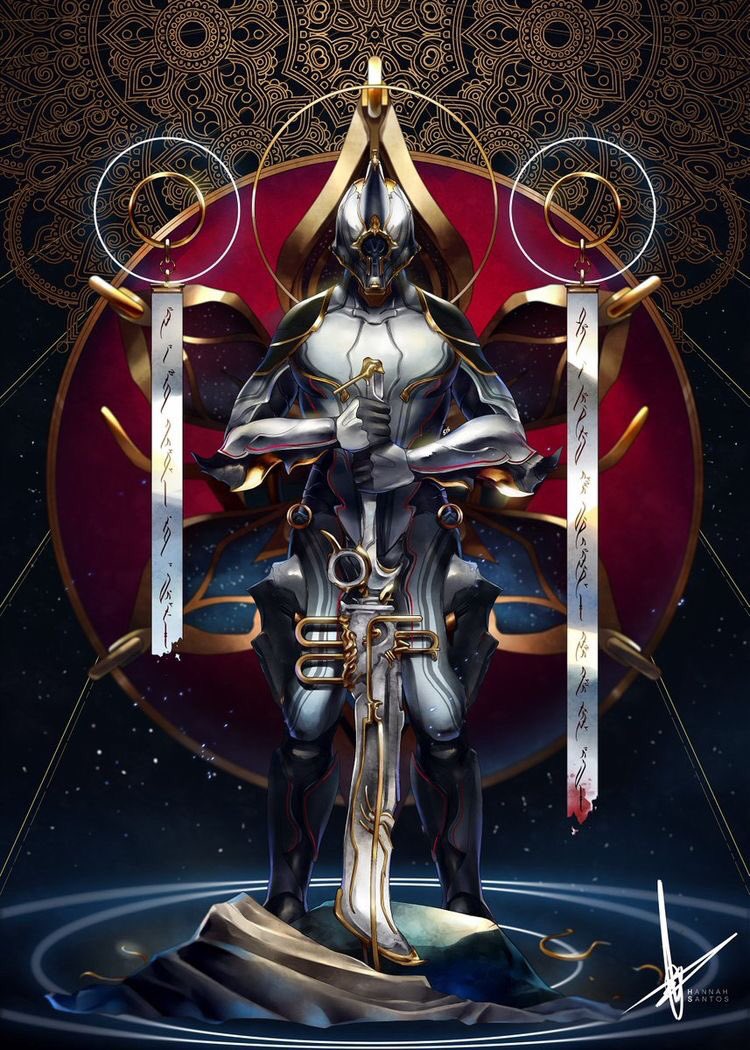
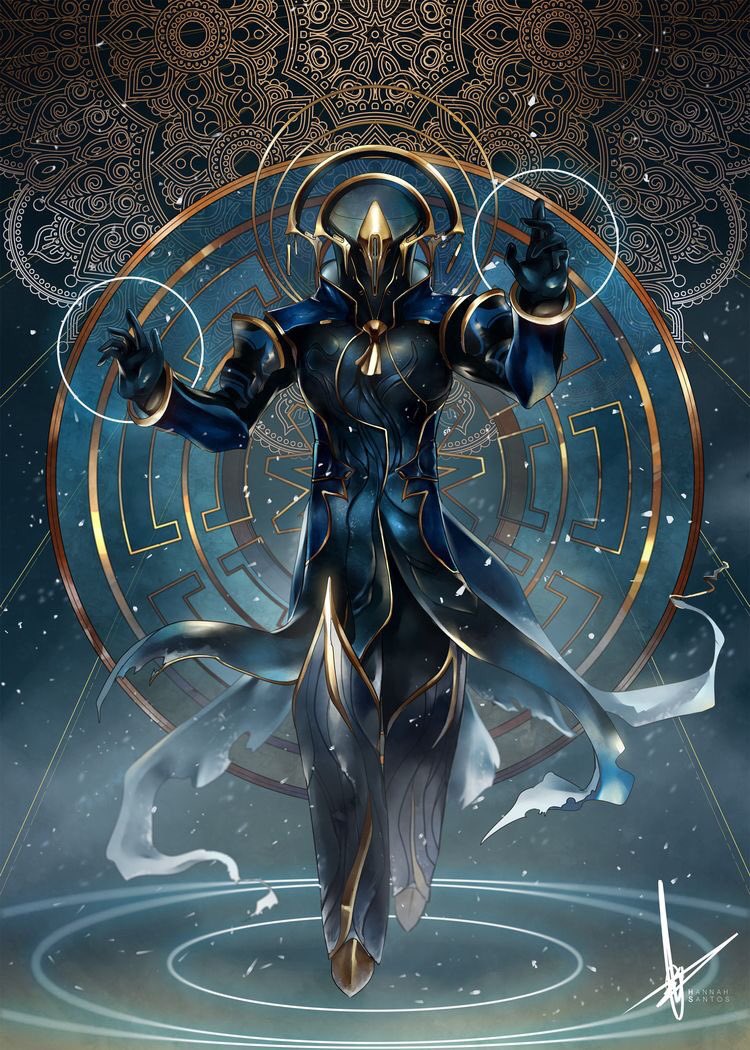
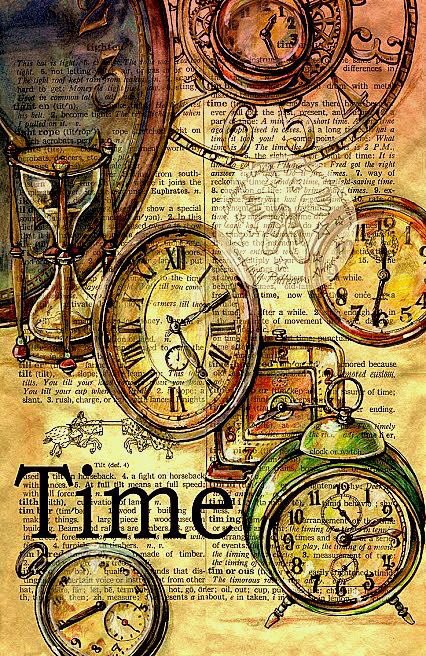
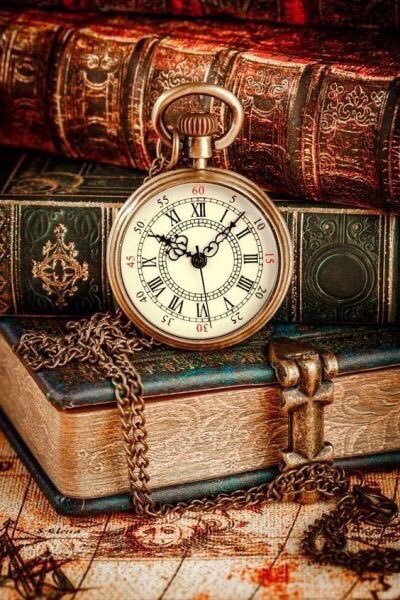
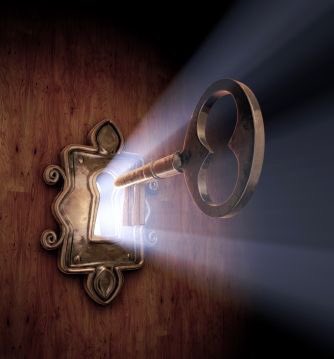

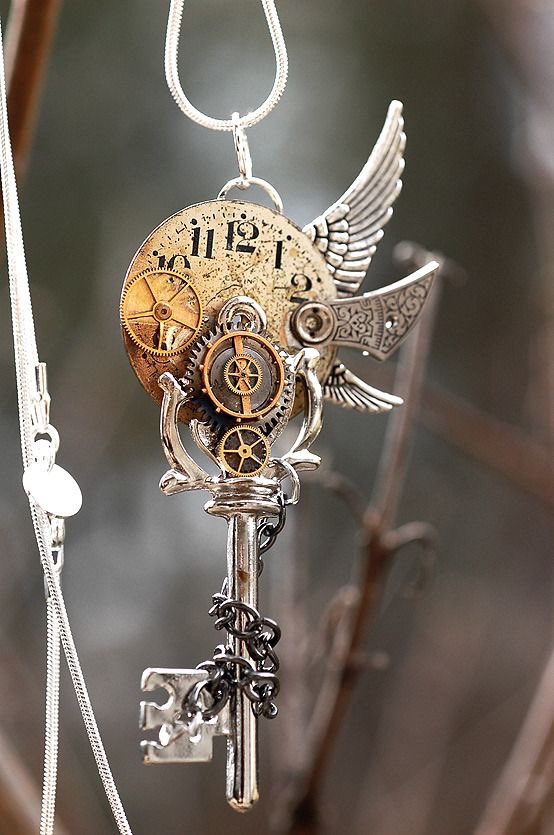


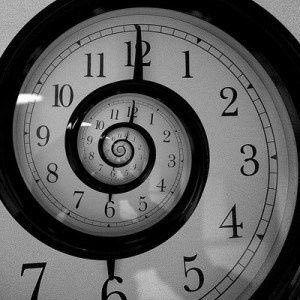
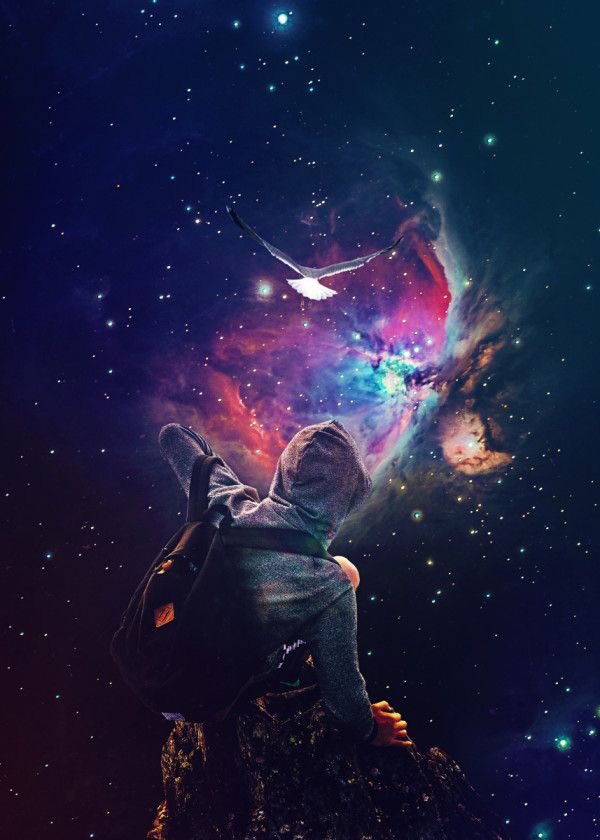
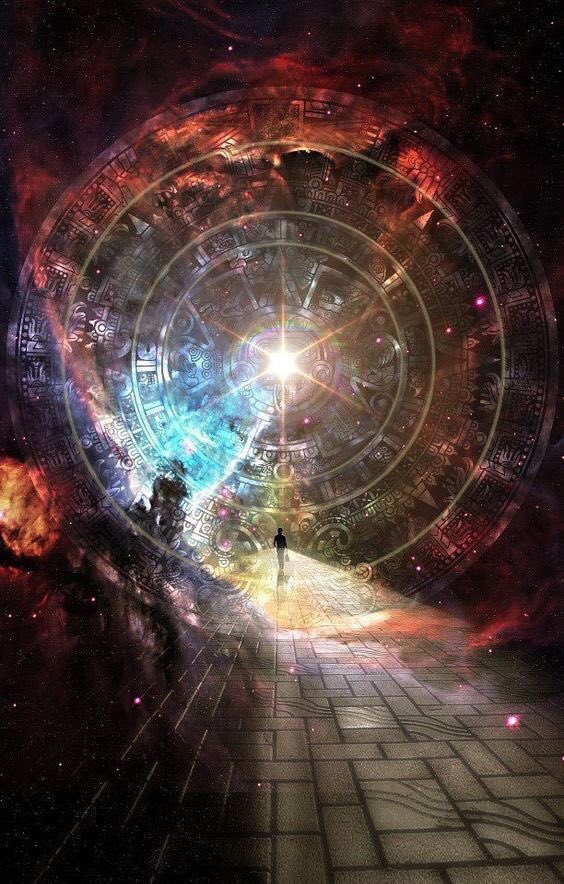
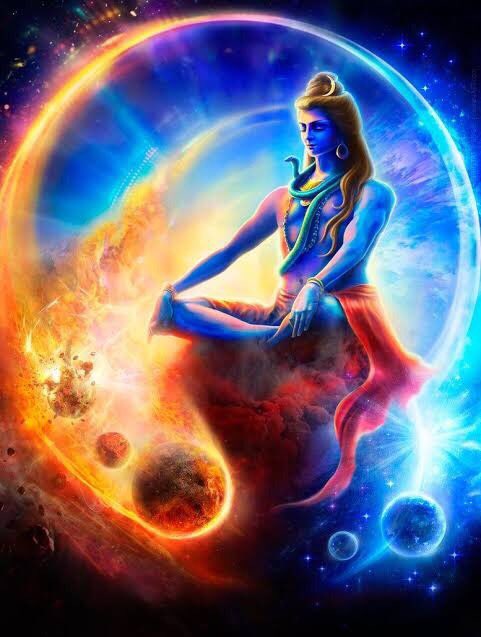
![the material world.Same concept is being preached by science of this era as a concept of big bang and big crunch.Other concept that are mentioned in our scriptures-1. Space time-पूर्ण कुम्भोदिः काल आहितस्तं वै पश्यामो बहुदा नु सन्तः । [AtharvaVeda 19.53.3] the material world.Same concept is being preached by science of this era as a concept of big bang and big crunch.Other concept that are mentioned in our scriptures-1. Space time-पूर्ण कुम्भोदिः काल आहितस्तं वै पश्यामो बहुदा नु सन्तः । [AtharvaVeda 19.53.3]](https://pbs.twimg.com/media/ES60gzFUcAEqbVZ.jpg)

